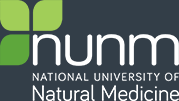Antifungal Materia Medica and Therapeutics | Paul Bergner | 90 minutes
Plants have engaged in an “arms-race” with fungi for many millions of years, and have evolved multiple mechanisms to inhibit their growth, disable their defenses, disrupt their biofilms, or destroy their cell membranes. We can take advantage of these mechanisms and apply whole plants, with all their synergistic constituents and activities, in direct contact with fungal-infected tissues. Because of the tendency of fungi and prokaryotic microbes to form multi-species biofilms, and specific anti-fungal component may make these herbs important in formulation for any topical infection. We will review the Azole-class of pharmaceutical topical antifungals, and then review the science and practical applications of berberine-herbs, Alliums, Calendula, thymol-herbs, Spilanthes/Acmella, Anemopsis, Commiphora, Usnea, Tabebuia, and Melaleuca, for common oral, vaginal, and skin infections.
Berberine and Isoquinoline Alkaloid Botanicals | Paul Bergner | 90 minutes
Wherever they are found plants containing berberine and related Isoquinoline-alkaloids are used in traditional systems of medicine as major topical and internal medicines. Hydrastis and Xanthorhiza in Eastern North America, Mahonia and Berberis species more widely distributed on the continent, and Coptis species in both North America and China have all become major botanicals in the materia medica of those lands. Recent research on concentrated forms of isolated berberine have demonstrated potential uses for diabetes and several other conditions.
Botanical Allies for Menstrual Health | Kathryn Kloos, ND | 90 minutes
Liver congestion, inflammation and poor circulation are all players in reproductive conditions in women. In this lecture we will dive into the latest research as well as the Eclectic uses of herbs that are routinely used to regulate menstrual cycles, optimize fertility and decrease stasis in the pelvis. Herbs we will discuss include black cohosh, vitex, shitavari, maca, yellow pond lily, pulsatilla, red root, peony, horse chestnut, yarrow and more.
Wildcrafting in a Warming World | Scott Kloos | 90 minutes
How are rising temperatures, extended periods of drought, erratic seasonal transitions, and other factors of the Earth’s changing climate impacting wild plant communities and the ecosystems in which they/we live, and how as wildcrafters will we adapt our harvesting practices to reflect this new reality? As we bear witness to the increasingly evident human-caused planetary crises spurred on by techno-industrial civilization, is it enough to simply alter the way we assess and plan for the long-term health and vitality of ecosystems from which we may potentially harvest wild plants, or might we simultaneously practice wildcrafting as a way of transforming the fundamental ways we relate to wild nature and the community of all life?
Field Applications in Botanical Medicine: Edible and Medicinal Weeds of the Pacific NW | Glen Nagel, ND | 90 Minutes
Join Herbalist and naturopathic doctor Glen Nagel and a field class of Northwest weeds. We will focus on plant identification, parts used and how to blend into a wild salad. Walking around the grounds and gardens of NUNM we will identify over 20 medicinal and edible plants.
New Trends in Herb Compounding: Herbal Foams, Whips, fluffs | Glen Nagel, ND | 90 minutes
There is so much to learn in herbalism from our rich historical past but creating new and innovative ways to use herbs is fun and exciting. In this workshop, Dr. Glen Nagel will discuss bringing innovations from the world of modern gastronomy to herbalism. We will discuss and demonstrate the use of the pressurized whipper using N2O and CO2 to make foams, fluffs, and whips. We will explore using different bases such as gums, seaweed gels, egg whites, and fats. Let’s have fun with laughing gas in a new safe way! Herbal foams are incredibly light and fluffy, give an amazing new taste and texture to common medicinal plants. We will explore this new field by talking about theory and then develop and practice making some fluffs, using a variety of herbal mucilages like marshmallow, seaweeds, egg whites, garbanzo water, and others.

